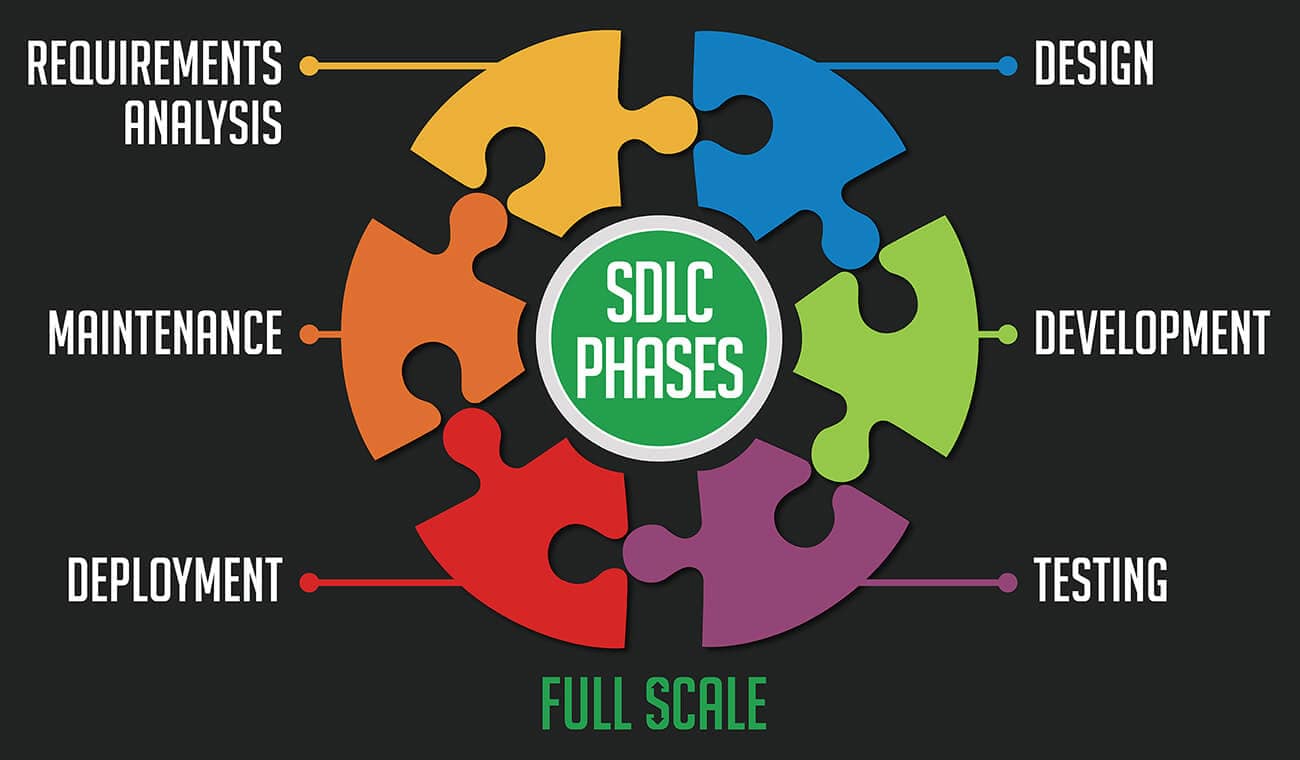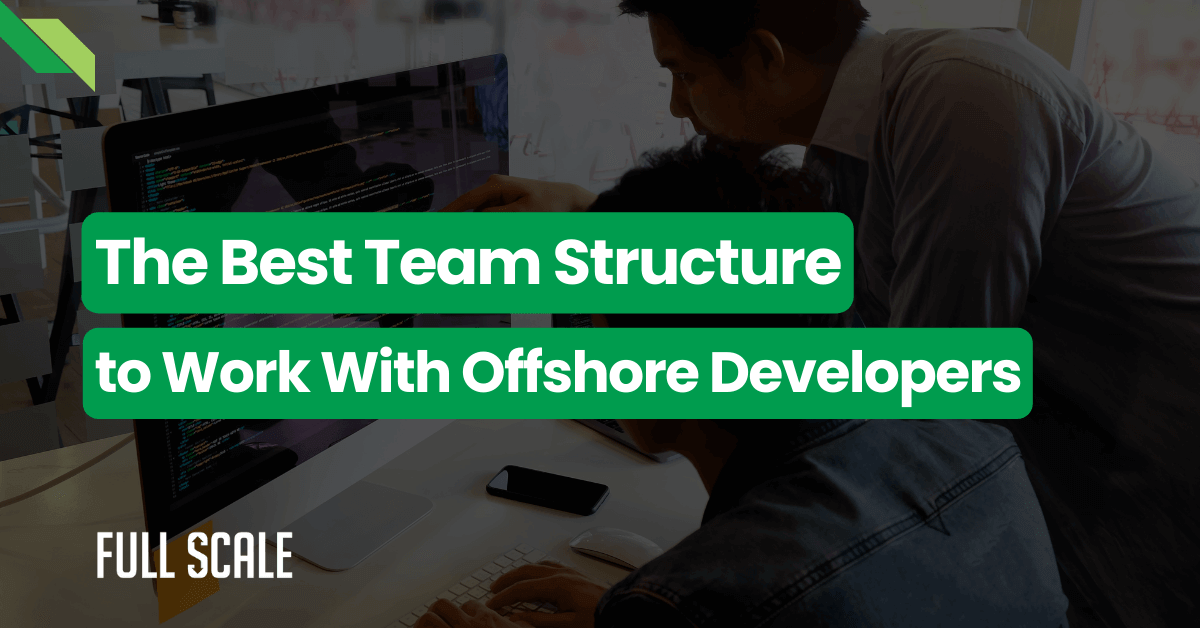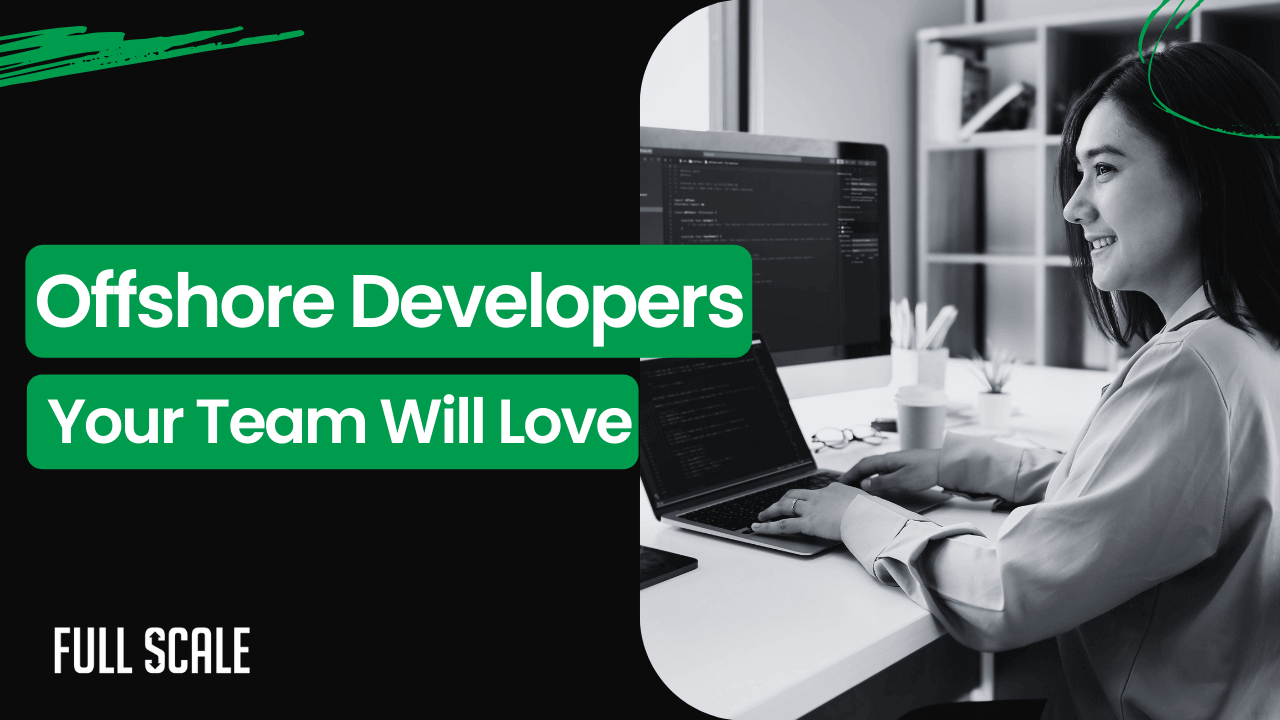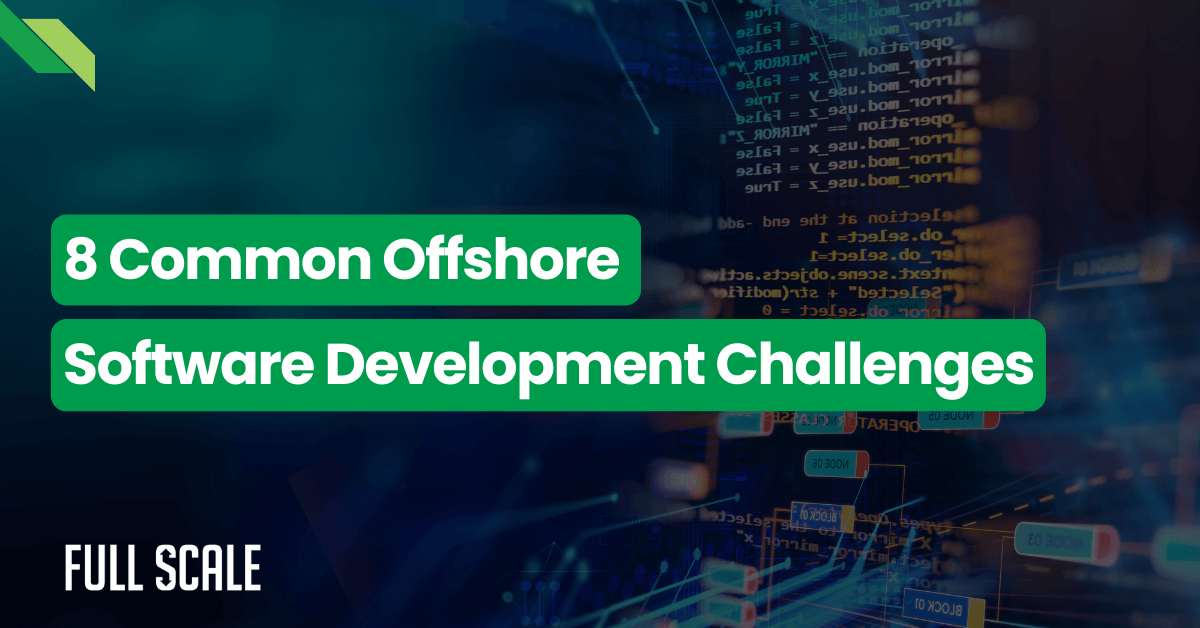Last Updated on 2025-07-28
You know all about the challenges of managing complex software projects. Balancing timelines, budgets, and quality while meeting stakeholder expectations is no small feat. That’s where the Software Development Life Cycle (SDLC) comes in.
SDLC isn’t just another industry buzzword. It’s a comprehensive approach that can transform your software development process from chaotic to streamlined.
Whether you’re launching a startup’s first app or optimizing workflows in an established company, understanding SDLC is crucial for success in today’s competitive tech landscape.
This guide will break down SDLC into practical, actionable insights. We’ll cover everything from SDLC phases to modern methodologies to enhance your team’s efficiency.
We’ve designed this guide with busy professionals in mind. Our goal is to provide you with knowledge and tools to improve your software development process, regardless of your project’s size, complexity, or budget limitations.
Related Video: What is Software Reengineering?
What is the Software Development Process?
The software development process, also known as the Software Development Life Cycle (SDLC), is a structured approach to creating and maintaining software applications.
It encompasses all the stages from initial conception to a software product’s final deployment and maintenance.
This process provides a framework for planning, creating, testing, and deploying high-quality software efficiently and effectively.
Why is SDLC Important?
SDLC is the backbone of successful software development. It’s important for several reasons:
- Structured Approach: SDLC provides a step-by-step methodology, ensuring no critical stages are overlooked.
- Quality Assurance: By incorporating testing throughout the process, SDLC helps maintain high software quality.
- Cost Management: It helps estimate and control costs throughout the development process.
- Time Efficiency: SDLC streamlines the development process, potentially reducing time-to-market.
- Clear Communication: It facilitates better communication among team members and stakeholders.

The 10 Key Processes in Software Development
Understanding the core processes in software development is crucial for anyone involved in creating software. These processes form the backbone of the Software Development Life Cycle (SDLC). Let’s dive deeper into each of these steps:
1. Planning
This is where the project takes shape. You define the project scope, objectives, and timelines.
Key activities include:
- Feasibility study
- Resource allocation
- Cost estimation
- Scheduling
Outcome: A project plan that guides the entire development process
2. Requirements Gathering
This phase involves collecting and documenting specific requirements from stakeholders.
Activities include:
- Interviews with stakeholders
- Creation of user stories
- Development of use cases
- Prioritization of features
Outcome: A clear, detailed specification of what the software needs to do
3. Design
Here, you create the blueprint for the software solution.
This phase includes:
- System architecture design
- Database design
- User interface (UI) design
- API design
Outcome: Detailed design documents that guide the development phase
4. Development
This is where the actual coding happens.
Key aspects include:
- Writing code according to the defined requirements and design
- Code reviews
- Unit testing
- Version control
Outcome: A working software product
5. Testing
Rigorous testing ensures the software meets specified requirements and quality standards.
Types of testing include:
Outcome: A list of defects to be fixed and a quality assurance report
6. Integration
This process involves combining individual software components or systems.
Activities include:
- System integration
- Data integration
- API integration
Outcome: A fully integrated system ready for deployment
7. Deployment
This is where the software is released to users.
Steps include:
- Preparing the production environment
- Data migration
- User training
- Go-live activities
Outcome: Software available for end-user use
8. Maintenance
Post-release support and updates are crucial for the software’s longevity.
This involves:
- Bug fixes
- Performance optimization
- Feature enhancements
- Security updates
Outcome: A stable, up-to-date, and secure software product
9. Review
This process involves evaluating the project’s success and identifying areas for improvement.
Activities include:
- Project retrospectives
- User feedback analysis
- Performance metric review
Outcome: Lessons learned and strategies for future projects
10. Documentation
Comprehensive software development documentation is crucial for future reference and maintenance.
This includes:
- Technical specifications
- User manuals
- API documentation
- System architecture documentation
Outcome: A complete set of documents that detail all aspects of the software
These processes are sometimes linear and may overlap or iterate depending on your SDLC model (e.g., Waterfall, Agile, etc.). However, understanding each of these steps is crucial for effective software development.
Purpose of Software Development Process
The primary purpose of the software development process is to produce high-quality software that meets or exceeds customer expectations, is delivered within time and cost estimates, and is easy to maintain and enhance. It aims to:
- Provide a framework for planning and controlling the creation of software
- Improve the quality of the software being developed
- Facilitate effective project management and communication
- Reduce risks associated with software development
- Ensure customer satisfaction through systematic delivery of value
Approaches or Models of SDLC: A Comprehensive Overview
The Software Development Life Cycle (SDLC) can be implemented using various models or approaches. Each model has its own strengths and is suited to different types of projects. Understanding these software development models is crucial for choosing the right approach for your specific software development needs.
1. Waterfall Model
The Waterfall model is a linear sequential approach to software development.
Key Characteristics:
- Sequential phases: Requirements, Design, Implementation, Verification, Maintenance
- Each phase must be completed before the next begins
- Emphasis on documentation
Best For:
- Projects with clear, unchanging requirements
- Short-term projects
- Projects where quality is prioritized over cost and time
Pros:
- Simple and easy to understand
- Well-defined stages with clear deliverables
Cons:
- Inflexible to changes
- Testing occurs late in the process
2. Agile Model
Agile is an iterative, incremental approach that emphasizes flexibility and customer satisfaction.
Key Characteristics:
- Iterative development cycles (sprints)
- Continuous feedback and adaptation
- Close collaboration with stakeholders
Best For:
- Projects with evolving requirements
- Projects requiring rapid delivery
- Customer-centric projects
Pros:
- Adaptable to changes
- Continuous delivery of working software
- High customer involvement
Cons:
- Can be less predictable
- Requires experienced team members
3. Scrum
Scrum is a specific Agile framework that focuses on delivering high-quality software through a series of fixed-length iterations called sprints.
Key Characteristics:
- Fixed sprint lengths (usually 2-4 weeks)
- Daily stand-up meetings
- Defined roles: Product Owner, Scrum Master, Development Team
Best For:
- Complex projects with changing requirements
- Teams that can self-organize
Pros:
- Promotes team collaboration
- Regular delivery of working software
Cons:
- Requires a cultural shift for traditional organizations
- Can be challenging to scale for large projects
4. Spiral Model
The Spiral model is a risk-driven approach that combines elements of both design and prototyping.
Key Characteristics:
- Repeating cycles of planning, risk analysis, engineering, and evaluation
- Emphasis on risk assessment
Best For:
- Large, high-risk projects
- Projects where user feedback is crucial
Pros:
- Allows for early production of working software
- High amount of risk analysis
Cons:
- Complex and expensive
- Success heavily dependent on risk analysis phase
5. V-Model
The V-Model is a variation of the Waterfall model with a strong emphasis on testing.
Key Characteristics:
- Each development stage has a corresponding testing phase
- Highly disciplined model with a specific deliverable for each phase
Best For:
- Projects with strict regulations or standards
- Projects where testing is a priority
Pros:
- Emphasis on verification and validation
- Works well for small to medium sized projects
Cons:
- Rigid and inflexible
- Early prototype is not available
6. DevOps
DevOps is not just a development model but a set of practices that combines software development (Dev) and IT operations (Ops).
Key Characteristics:
- Continuous integration and continuous delivery (CI/CD)
- Automation of processes
- Close collaboration between development and operations teams
Best For:
- Organizations looking to improve deployment frequency and time to market
- Projects requiring rapid and reliable updates
Pros:
- Faster delivery of features
- More stable operating environments
- Improved communication and collaboration
Cons:
- Requires significant cultural change
- Initial implementation can be complex
Choosing the right SDLC model depends on project size, complexity, team expertise, and client requirements. Many organizations use hybrid approaches, combining elements from different models to best suit their needs.
Key Metrics of Software Development Process
To measure the effectiveness of your SDLC, consider these key metrics:
- Cycle Time: The time it takes to move from idea to production.
- Lead Time: The time between receiving a request and delivering the final product.
- Deployment Frequency: How often new code is deployed to production.
- Change Failure Rate: The percentage of changes that result in failures or rollbacks.
- Mean Time to Recovery (MTTR): How quickly the team can recover from failures.
How Does SDLC Compare with Other Lifecycle Management Methodologies?
SDLC is specifically tailored for software development, but it shares similarities with other system development lifecycle management methodologies.
- Project Management Life Cycle (PMLC): While SDLC focuses on software, PMLC is applicable to any type of project.
- Product Life Cycle (PLC): PLC covers the entire lifespan of a product, from conception to obsolescence, whereas SDLC focuses on the development phase.
- Business Process Management Life Cycle (BPMLC): BPMLC is concerned with optimizing business processes, while SDLC is about creating software.
7 Best Tips for SDLC
To maximize the benefits of SDLC, consider these best practices:
- Choose the Right Model: Select an SDLC model that fits your project needs and team dynamics.
- Prioritize Communication: Ensure clear and constant communication among all stakeholders.
- Embrace Automation: Use tools to automate repetitive tasks and improve efficiency.
- Implement Continuous Integration/Continuous Deployment (CI/CD): This practice can significantly speed up your development process.
- Focus on Quality: Incorporate testing throughout the development process, not just at the end.
- Encourage Collaboration: Foster a culture of teamwork and knowledge sharing.
- Stay Flexible: Be prepared to adapt your process as needed based on project requirements and feedback.
How Full Scale Help with Your SDLC
Implementing an effective SDLC can be challenging, especially with limited resources or expertise.
This is where Full Scale comes in.
As experts in staff augmentation, we can provide you with skilled developers well-versed in various SDLC models and best practices.
Full Scale offers:
- Experienced Developers: Our team is proficient in multiple programming languages and frameworks.
- Flexible Engagement Models: We can adapt to your preferred SDLC approach, whether it’s Agile, Waterfall, or a hybrid model.
- Quality Assurance: We provide dedicated QA specialists to ensure your software meets the highest standards.
- Scalability: As your project grows, we can quickly scale your team to meet changing demands.
- Cost-Effectiveness: By leveraging our offshore development capabilities, you can significantly reduce your development costs without compromising quality.
We’re experienced in implementing various SDLC models. Our team can help you choose and implement the most appropriate model for your project, ensuring efficient development and high-quality output.
Book Your Discovery Call Today
FAQs
1. What is the need for the software development process?
The software development process provides a structured approach to creating software. It helps manage complexity, ensure quality, control costs, and meet deadlines. Software development can become chaotic without a defined process, leading to poor-quality products, budget overruns, and missed deadlines.
2. What is the purpose of requirements gathering in software development?
Requirements gathering is crucial for understanding what the software needs to do. It helps define the project’s scope, sets clear expectations, and provides a blueprint for development. Proper requirements gathering can prevent misunderstandings, reduce rework, and ensure the final product meets user needs.
3. Is SDLC waterfall or Agile?
SDLC is neither inherently waterfall nor Agile. These are two different approaches within the SDLC framework. Waterfall is a linear sequential approach, while Agile is an iterative, incremental approach. The choice between them (or other models) depends on the project’s and the organization’s specific needs.
4. Is it a software development life cycle or a software development lifecycle?
Both “life cycle” and “lifecycle” are correct and commonly used. “Life cycle” is the traditional spelling, while “lifecycle” is a more modern, compound version. They mean the same thing in the context of software development.
5. How does SDLC address security?
Security should be integrated throughout the SDLC, not just as an afterthought. This approach, often called “Secure SDLC” or “SD-LC,” includes security considerations in every phase, from requirements gathering to maintenance. It involves threat modeling, secure coding practices, security testing, and regular security audits.
6. How can DevSecOps be integrated into SDLC?
DevSecOps integrates security practices within the DevOps process. To incorporate DevSecOps into SDLC:
- Include security requirements in the planning phase
- Use automated security testing tools in the CI/CD pipeline
- Conduct regular security training for developers
- Implement continuous monitoring for security threats
- Foster collaboration between development, operations, and security teams

Matt Watson is a serial tech entrepreneur who has started four companies and had a nine-figure exit. He was the founder and CTO of VinSolutions, the #1 CRM software used in today’s automotive industry. He has over twenty years of experience working as a tech CTO and building cutting-edge SaaS solutions.
As the CEO of Full Scale, he has helped over 100 tech companies build their software services and development teams. Full Scale specializes in helping tech companies grow by augmenting their in-house teams with software development talent from the Philippines.
Matt hosts Startup Hustle, a top podcast about entrepreneurship with over 6 million downloads. He has a wealth of knowledge about startups and business from his personal experience and from interviewing hundreds of other entrepreneurs.




